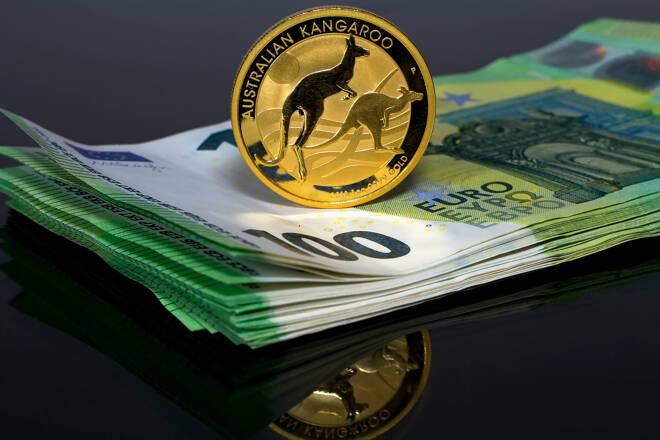Advertisement
Advertisement
AUD to USD Forecast: Australian Composite PMI Hits a 4-Month High 48.1
By:
Private sector firms attributed rising cost prices to increasing costs for shipping and raw materials. The private sector contracted for a fourth month.
Highlights
- The AUD/USD gained 0.14% on Tuesday, ending the session at $0.65790.
- Better-than-expected Australian business confidence numbers and stimulus chatter from Beijing influenced the pair.
- On Wednesday, Australian private sector PMIs drew interest ahead of the US PMI numbers later in the session.
Tuesday Overview of the AUD/USD
The AUD/USD gained 0.14% on Tuesday. Partially reversing a 0.39% loss from Monday, the Australian dollar ended the session at $0.65790. The Australian dollar rose to a high of $0.66123 before falling to a low of $0.65515.
Australian Private Sector PMIs in Focus
On Wednesday, preliminary Australian private sector PMI numbers for January drew investor interest. The all-important Services PMI increased from 47.1 to 47.9, with the Manufacturing PMI rising from 47.6 to 50.3. Economists forecast the Services and Manufacturing PMIs to increase to 48.0 and 48.4, respectively.
According to the Preliminary Survey,
- Business activity across the private sector declined for the fourth consecutive month.
- New business across the manufacturing and services sectors fell at a less marked pace.
- Firms continued to hire on improving optimism, though job creation was only registered in the services sector.
- Costs continued to increase at an above-average rate because of increased prices for raw materials and shipping.
- However, charge inflation softened to its lowest level since Q1 2021.
- The Composite PMI increased from 46.9 to a four-month high of 48.1.
Significantly, the services sector accounts for over 60% of the Australian economy. However, the pickup in service sector activity is unlikely to delay RBA plans to cut interest rates. The survey did not cite rising wages as a reason for the upswing in cost prices. Nonetheless, the RBA will likely continue to monitor cost inflation relating to shipping prices.
Away from the economic calendar, investors must also monitor stimulus chatter from Beijing.
US Economic Calendar: US Services Sector Puts the US Economy in the Spotlight
On Wednesday, preliminary private sector PMIs for January will garner investor interest. However, the Services PMI could influence investor bets on a March Fed rate cut. Economists forecast the S&P Global Services PMI to fall from 51.4 to 51.0 in January. Investors must consider the prices and employment sub-components.
The services sector accounts for over 70% of the US economy. A pickup in prices and employment could support wage growth and disposable income. An upward trend in disposable income could fuel consumer spending and demand-driven inflation.
There are no Fed speakers to influence. The Fed entered the Blackout period on January 21.
Short-Term Forecast
Near-term AUD/USD trends remain hinged on US service sector PMIs, US inflation, and China stimulus plans. A pickup in US service sector activity and sticky US inflation could tilt monetary policy divergence toward the US dollar.
AUD/USD Price Action
Daily Chart
The AUD/USD remained below the 50-day and 200-day EMAs, affirming bearish price signals.
An AUD/USD move through the 200-day EMA would bring the $0.66162 resistance level and the 50-day EMA into play. A break above the 50-day EMA would support a move toward the $0.66500 handle.
On Wednesday, private sector PMIs and stimulus chatter from Beijing need consideration.
However, a fall through the $0.65500 handle would bring the $0.64900 support level and trend line into play.
A 14-period Daily RSI reading of 38.91 suggests an AUD/USD drop below the $0.65 handle before entering oversold territory.
4-Hourly Chart
The AUD/USD sat below the 50-day and 200-day EMAs, confirming the bearish price trends.
An AUD/USD breakout from the 50-day EMA and the $0.66162 resistance level would support a move to the 200-day EMA.
However, a break below the $0.65500 handle would give the bears a run at the $0.64900 support level and the trend line.
The 14-period 4-Hourly RSI at 47.52 suggests an AUD/USD fall below the $0.65 handle before entering oversold territory.
About the Author
Bob Masonauthor
With over 28 years of experience in the financial industry, Bob has worked with various global rating agencies and multinational banks. Currently he is covering currencies, commodities, alternative asset classes and global equities, focusing mostly on European and Asian markets.
Advertisement
